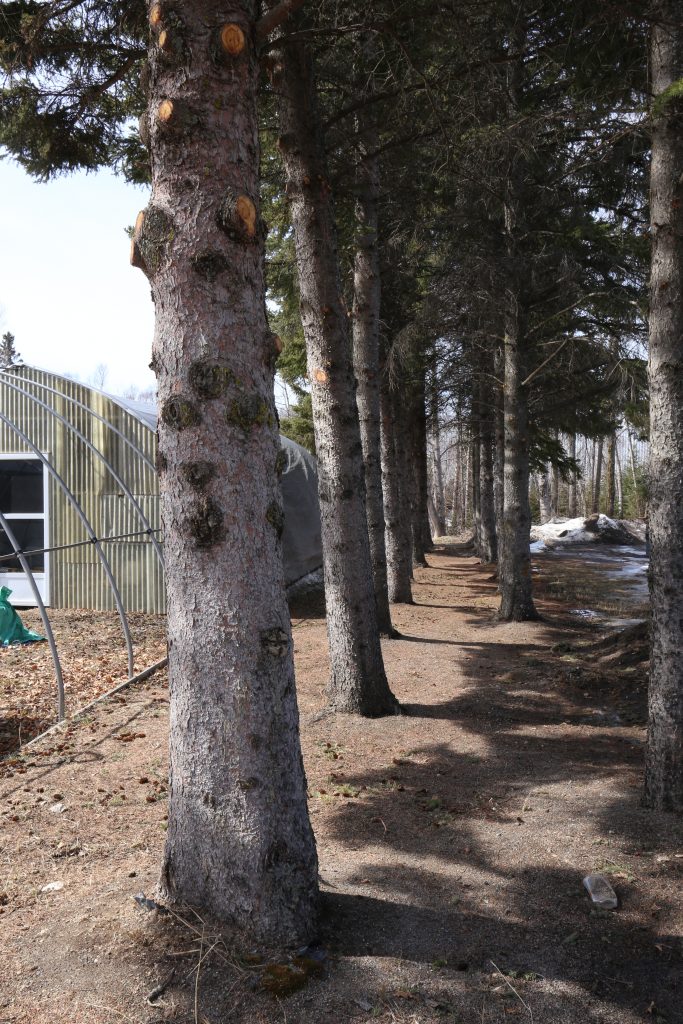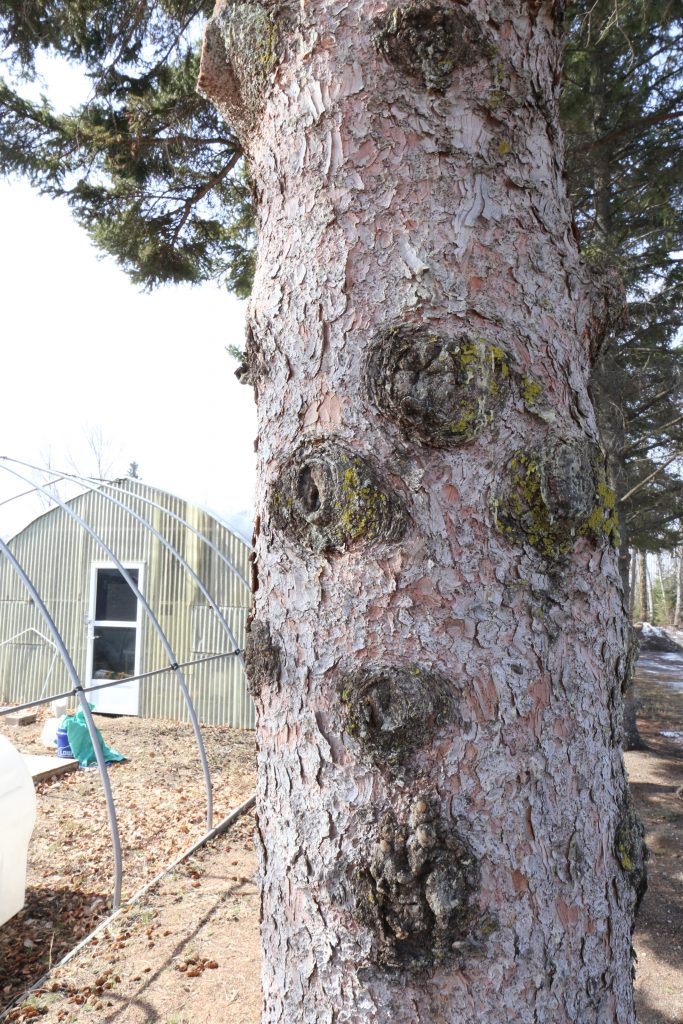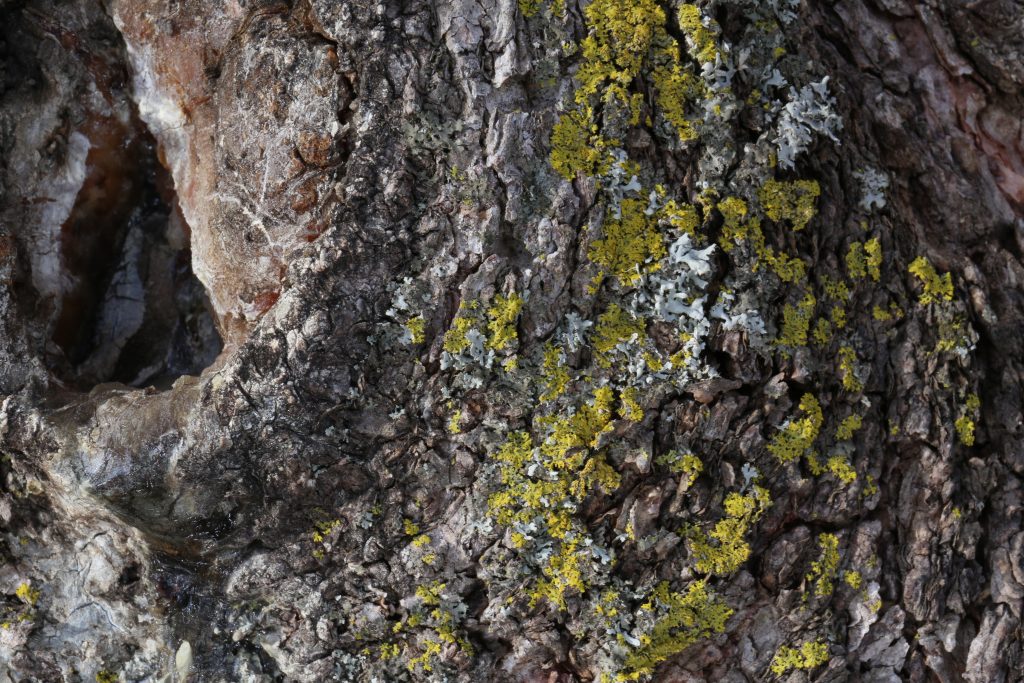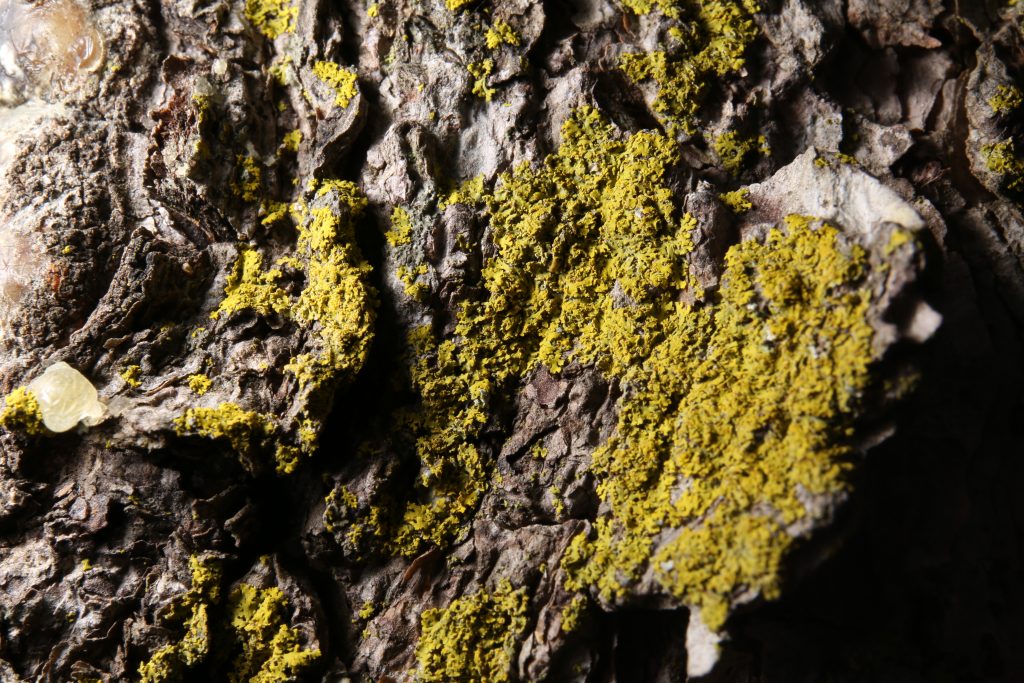As you head West toward the greenhouses (Fig. 2-1), you will see a row of white spruce, with the bottom branches pruned off. These have only a few conspicuous lichen colonies in a few spots.

Fig. 2-1 Row of white spruce (Picea glauca)
Trees
White spruce (Picea glauca) is one of the common boreal forest trees, with preference for upland, well drained soils. They are less spindly than the related black spruce more common in wet locations.
Lichens

The pruning exposes the main trunk well, and also the somewhat sparse lichens, which have not had a chance do develop since the pruning was done (Fig. 2-2). The most prominent lichen here are the yellow spots on the tree bark, surrounding the wounds in the bark.

Fig. 2-3 Candelaria concolor (Candleflame, lemon lichen)

Candelaria concolor (Candleflame, lemon lichen) on closer inspection consists of small lobes and is described as “foliose” lichen, even though from a distance it looks like a crust or dusting on the tree bark. The lobes are better seen at higher magnification and to see them better, you may want to use the zoom feature of your software. You will then also notice the white rhizines protruding from the lower surface.
After this stop continue between the greenhouses and back entrance to Centennial Building (CB), toward the main CB courtyard with stops 3 and 4.
On the way to stop 3 you will pass several interesting trees:
As you pass between the greenhouses and Centennia Building, on your right will be three bur oaks (Quercus macrocarpa) – a prairie/parkland tree which is at the Eastern end of its distribution in Thunder Bay (Stanley, Kakabeka Falls Provincial Park). It can be a host to native North American truffle fungi.
In front of you, before you turn left, there will be a pear tree (Pyrus ussuriensis). To the right of the path (beside the greenhouses) is a cluster of evergreens: black (Picea mariana), Serbian (Picea omorika), Colorado spruces (Picea pungens), specimen of Ponderosa pine (Pinus ponderosa), local balsam fir (Abies balsamea) and native red pine (Pinus resinosa). The labels are still somewhat readable.
As you turn left toward Stop 3, you will pass by large shrubs of staghorn sumac (Rhus typhina) on the left. Finally, you will reach the raised planter with two Japanese lilacs (Stop 3).